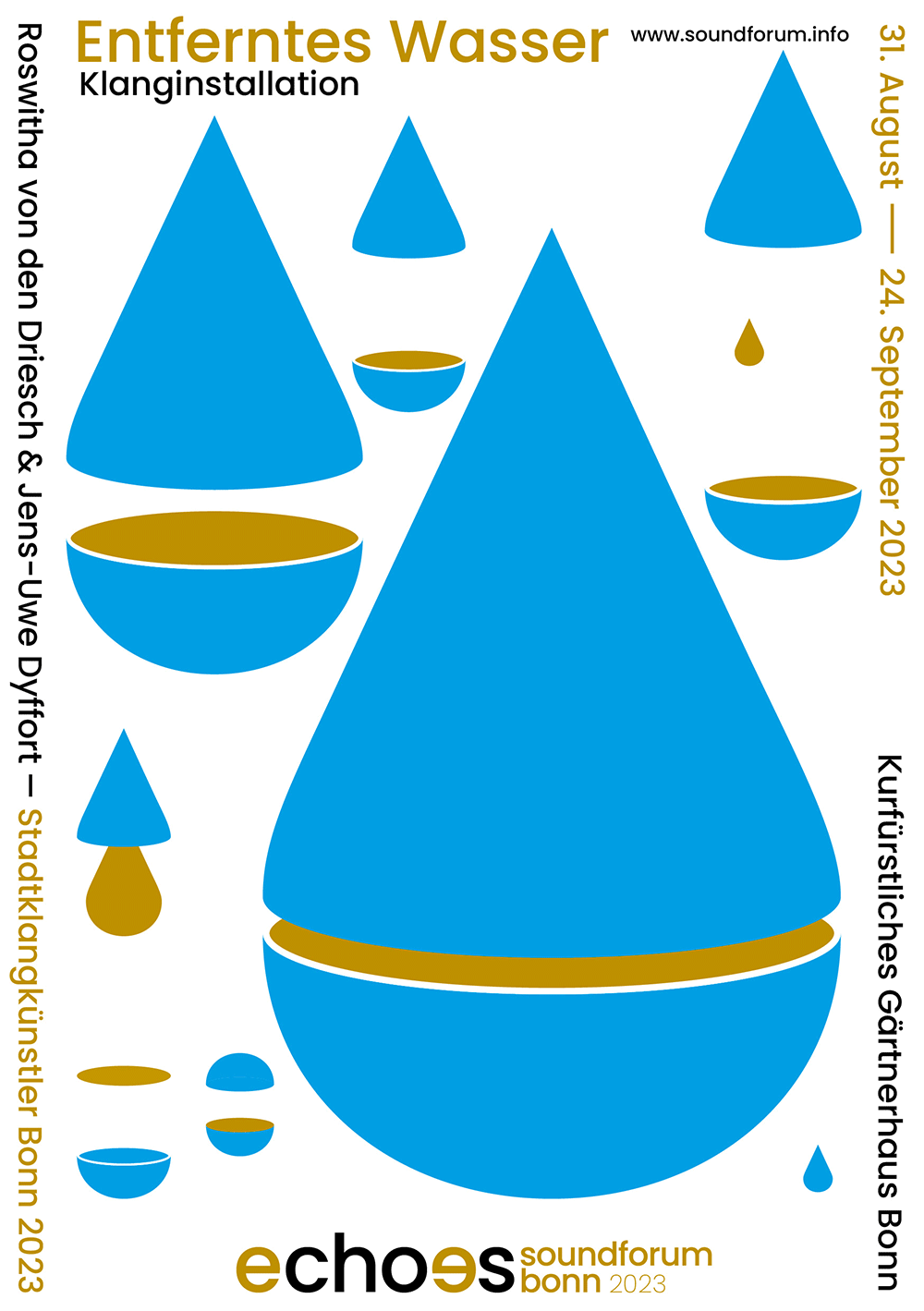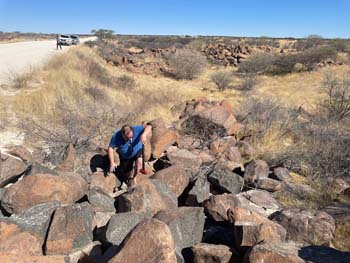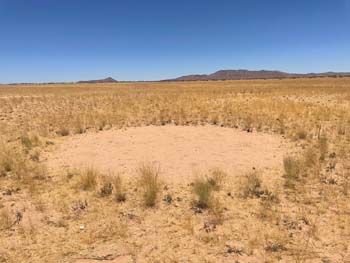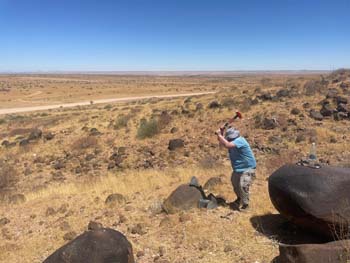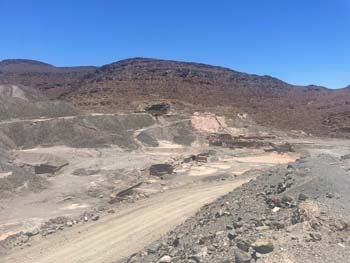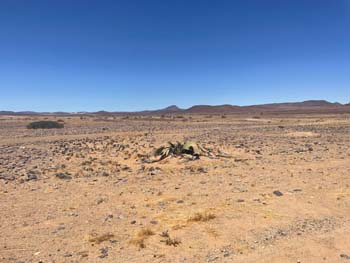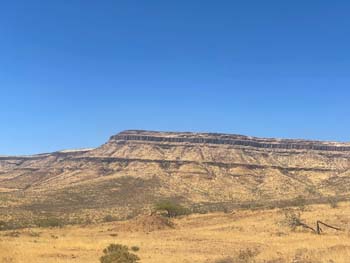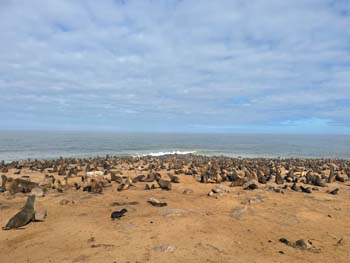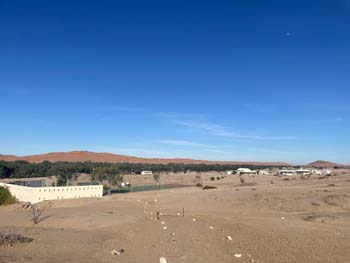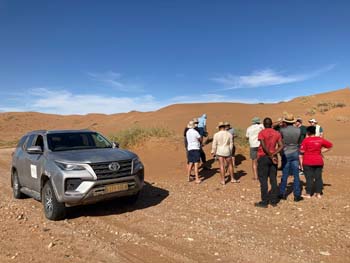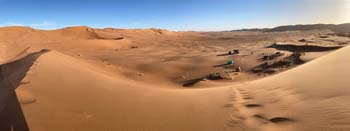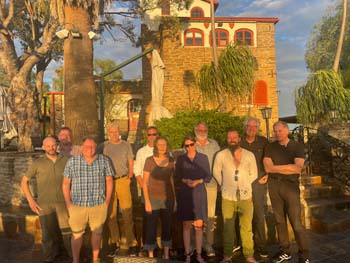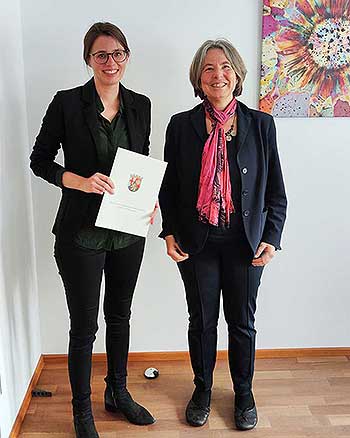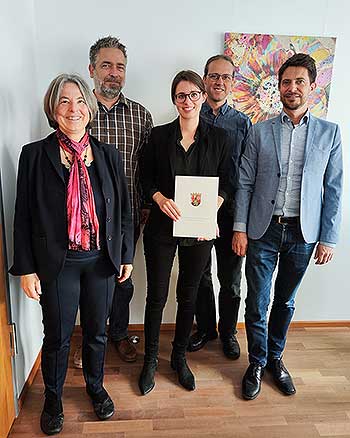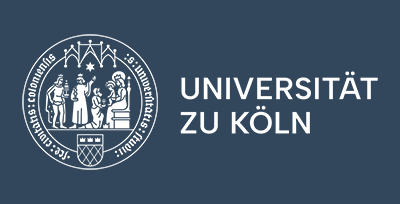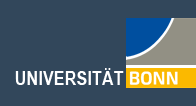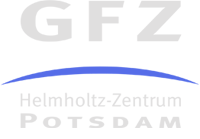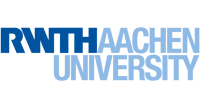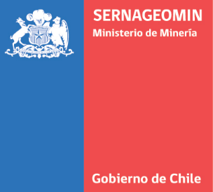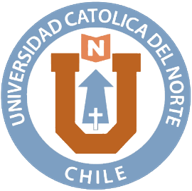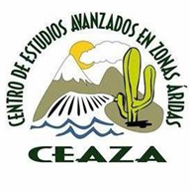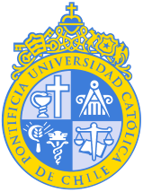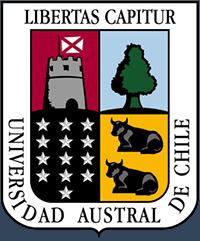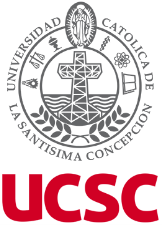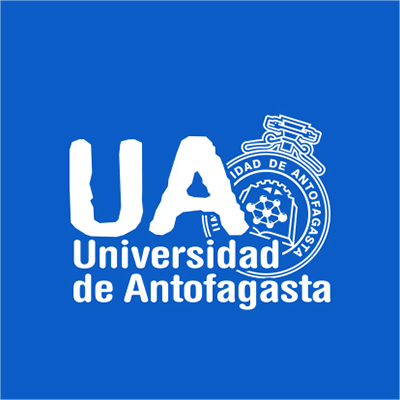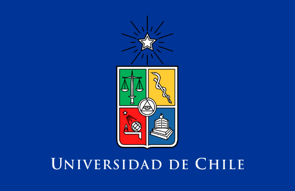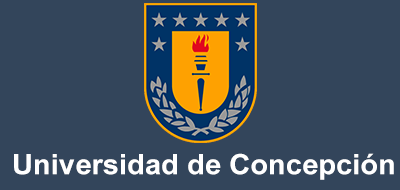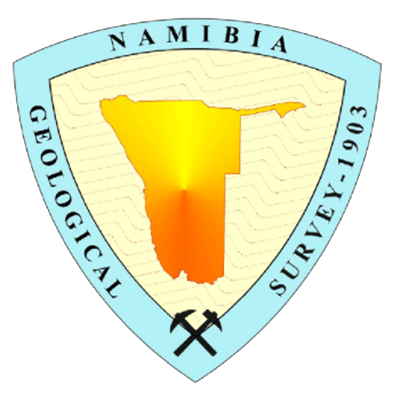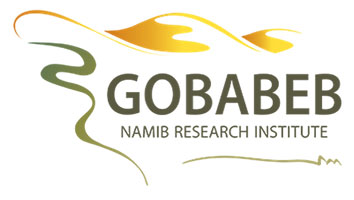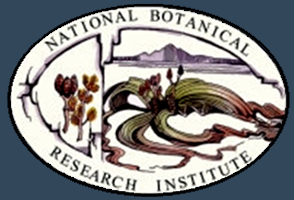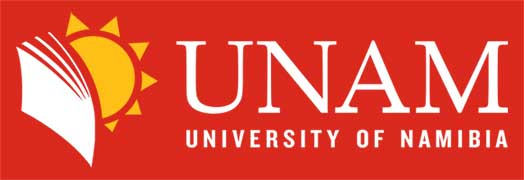
Log in
Entferntes Wasser - Sound installation / Exhibition
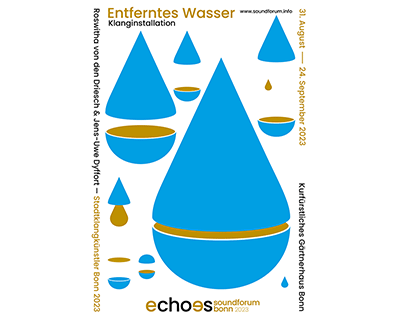 Sound installation at the Kurfürstlichen Gärtnerhaus Bonn
Sound installation at the Kurfürstlichen Gärtnerhaus Bonn
31 August — 24 September 2023
Tuesday to Friday, 15:00 to 18:00
Saturday + Sunday, 12:00 to 18:00
Opening: 30 August 2023 at 19:00
Kurfürstlichen Gärtnerhaus Bonn
Beethovenplatz 1, 53115 Bonn
At the end of “echoes – soundforum bonn 2023” by the Beethoven Foundation Bonn, the Bonn Cirty Sound Artists Roswitha von den Driesch and Jens-Uwe Dyffort will present a three-part sound installation at the Beethovenfest in the Kurfürstliches Gärtnerhaus, which revolves around the theme of plants in the context of the increasing worldwide water shortage.
In the run-up to the project, von den Driesch and Dyffort were able to exchange ideas with scientists from the Nees Institute for Plant Diversity in Bonn. Together with biologists, geologists and climate researchers from the international collaborative research project CRC1211 “Earth – Evolution at the dry limit”, they undertook a joint research excursion in 2022 to the Atacama Desert in Chile, which is characterised by its extreme aridity. Already in mid-June 2023, they both realised the sound installation “Maltreated Rocks” for the SACO Art Biennial in Antofagasta, the capital of the Atacama region in Chile.
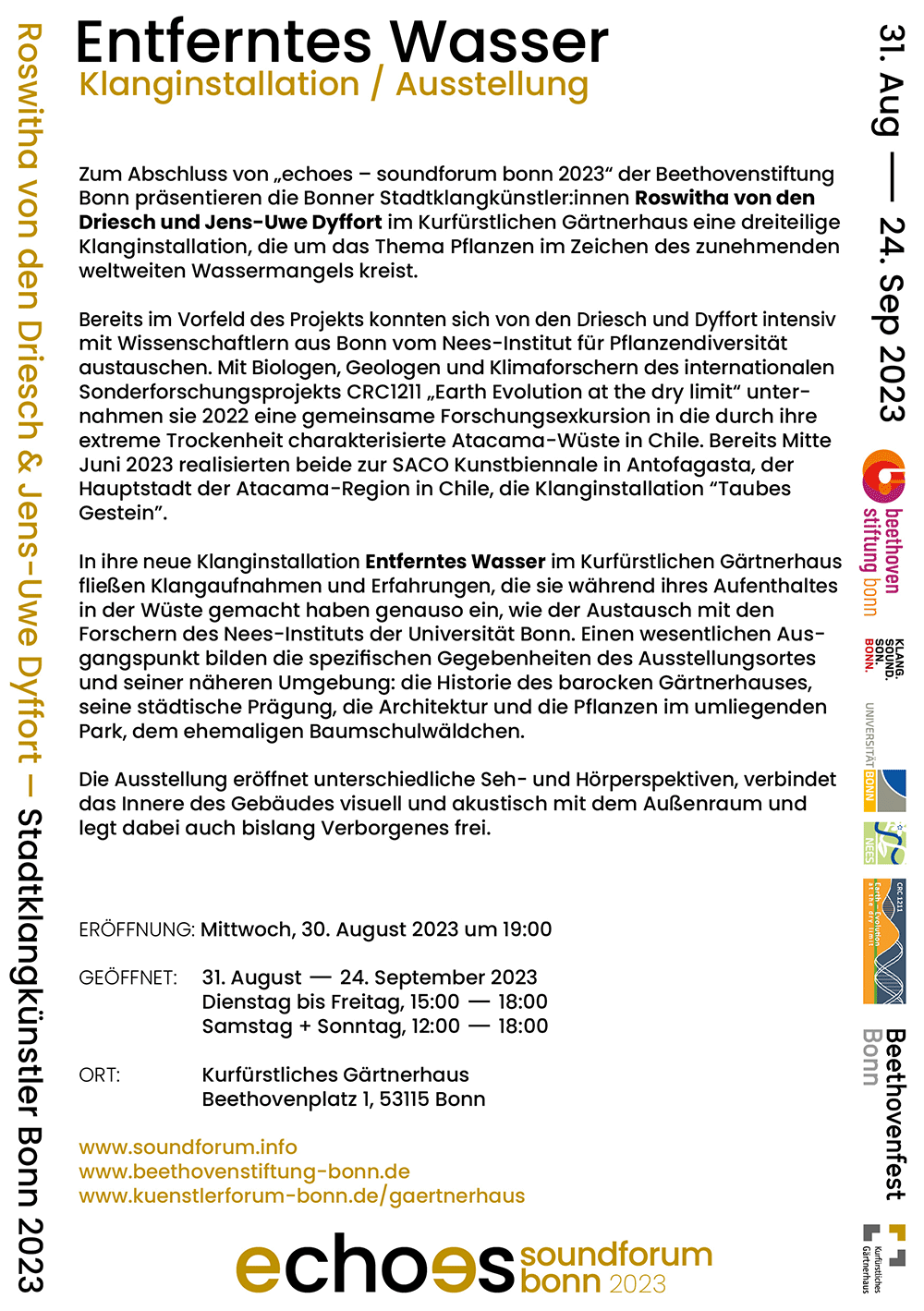
CRC1211 3rd phase preparatory excursion to the Namib Desert
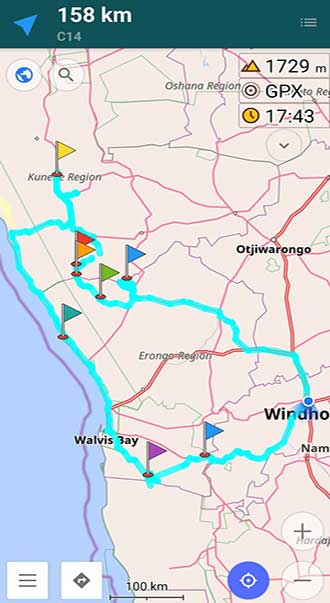 From December 6 to 16, 2022 an interdisciplinary team of 11 PIs of the CRC1211 joined for an introductory fieldtrip to the northern part of the Namib Desert with the aim to initiate cross-disciplinary scientific exchange and future interdisciplinary work in the Namib Desert.
From December 6 to 16, 2022 an interdisciplinary team of 11 PIs of the CRC1211 joined for an introductory fieldtrip to the northern part of the Namib Desert with the aim to initiate cross-disciplinary scientific exchange and future interdisciplinary work in the Namib Desert.
The trip was supported by the Gobabeb Namib Research Institute, mainly Eugene Marrais and Gillian Maggs-Kölling, who hosted the group in Namibia and shared their vast knowledge on the Namib Desert with the participants. The trip organizers Eugene Marrais, Dietmar Quandt, and Julia Bechteler introduced the PIs to various biological and geological sites: The route started from Windhoek to the northern towns of Uis with stops at the Brandberg massif and Palmwag with its table mountains.
The group then turned to the Atlantic coast with a stop at Cape Cross, where the PIs got introduced to an exemplary site of the CRC1211 coastal transect, at which cross-disciplinary science among botanists (B01), zoologists (B02), and geneticists (B06), is already happening. Turning again inland towards the core Namib Desert, the Gobabeb Namib Research Institute warmly welcomed the group with a barbeque and organized an expedition to the famous red dune system next to the research station including a unique night in the dunes, where the PIs were able to experience fog, and hence water income to the desert during early morning.
The trip ended with an interdisciplinary workshop discussing future collaborations and concluded with farewell dinner in Windhoek before most of the participants departed back to the German winter. The trip was very fruitful for all participants and new project ideas are already in realisation.
A big thank you to Gillian Maggs-Kölling and Eugene Marrais as well as the whole Gobabeb team for the warm welcoming and hospitability as well as sharing the great nature of Namibia with the group!
| Day 1: Arrival |
|
Day 2: Brandberg Lodge. Jurassic Dolerites, pegmatites, termite circles and meerkats |
||
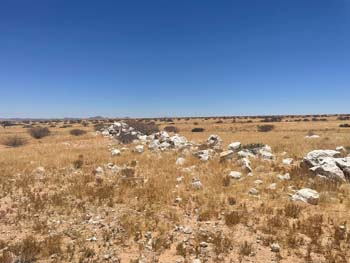 |
||
|
Day 3: From Brandberg Lodge to Palmwag Lodge. Karoo Fm, lavas etc., Abandoned Brandberg West mine, Damara triangular facets scorpions |
||
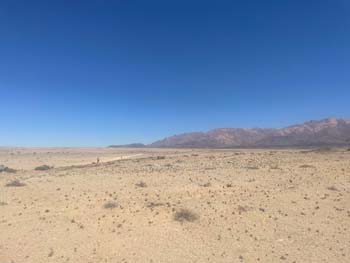 |
||
|
Day 3 (also): Living fossil Welwitschia mirabilis, gymnosperm, two leaves only, and many interesting facts |
|
Day 4: Grootberg Lodge , giraffes and game, bitter melons and, nice trapp volcanics |
||
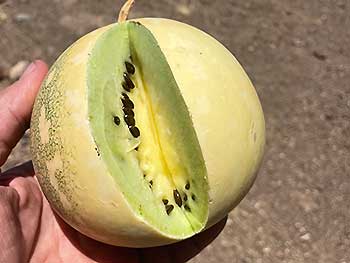 |
||
|
Day 5: Cape Cross seals and visit to the interdisciplinary CRC transect, salt pans, marine terraces |
||
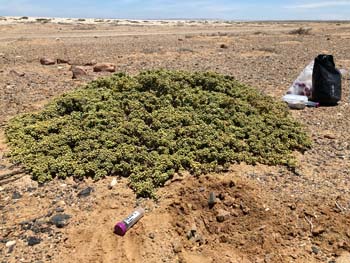 |
||
|
Day 6: Swakopmund and the Gobabeb fieldsite |
|
Day 7: The Gobabeb fieldsite, sand, sand, sand and a fox and fog |
||
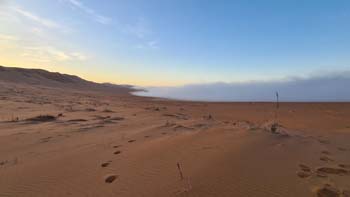 |
||
|
Day 8: Leaving the Gobabeb field site to Windhoek |
Congratulations to Julia Bechteler for her Professorship at the University of Kaiserslautern-Landau (RPTU)
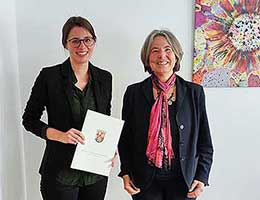
We congratulate Dr. Julia Bechteler, PI in CRC1211 B07 and former research and teaching assistant at the Nees Institute for Plant Biodiversity at the University of Bonn, who has accepted an offer from the University of Kaiserslautern-Landau (RPTU) to join as Professor for Biodiversity and Ecology of Plants at the Department of Natural and Environmental Sciences.
We wish her all the best in establishing her junior research group and look forward to maintaining close collaboration within the CRC1211 and other joint research projects.
Contact |
|
| Speaker: Prof. Dr. Tony Reimann Institute of Geography | University of Cologne Zülpicher Str. 45 | 50674 Cologne +49 (0)221 470-1724 | t.reimann@uni-koeln.de |
|
| Managing Director: Christian Tiede Institute of Geology and Mineralogy | University of Cologne Zülpicher Str. 49b | 50674 Cologne +49 (0)221 470-89833 | christian.tiede@uni-koeln.de |
|
_ |
|
| Co-Speaker: Prof. Dr. Christine Heim Institute of Geology and Mineralogy | University of Cologne Zülpicher Str. 49a | 50674 Cologne +49 (0)221 470-6818 | christine.heim@uni-koeln.de |
|
| Scientific Coordinator: Dr. Benedikt Ritter Institute of Geology and Mineralogy | University of Cologne Zülpicher Str. 49b | 50674 Cologne +49 (0)221 470-89868 | benedikt.ritter@uni-koeln.de |
|
_ |
|
| Co-Speaker: Prof. Dr. Dietmar Quandt Nees Institute for Biodiversity of Plants | University of Bonn Meckenheimer Allee 170 | 53115 Bonn +49 (0)228 73-3315 | quandt@uni-bonn.de |
|
| Webmaster: Tim Schlüter Institute of Geography | University of Cologne Otto-Fischer-Str. 4 | 50674 Cologne +49 (0)221 470-3735 | webmaster@sfb1211.de |
|


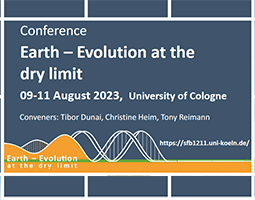 A workshop conference on the relationships between the evolution of the Earth’s surface, biota and climate at the water limit of habitable Earth.
A workshop conference on the relationships between the evolution of the Earth’s surface, biota and climate at the water limit of habitable Earth.